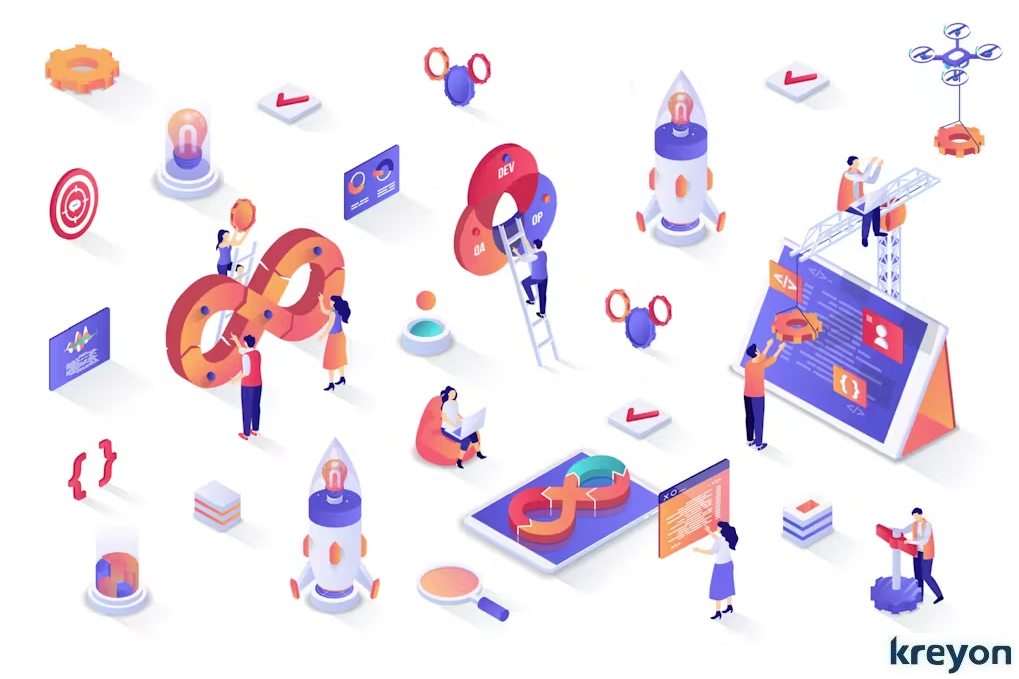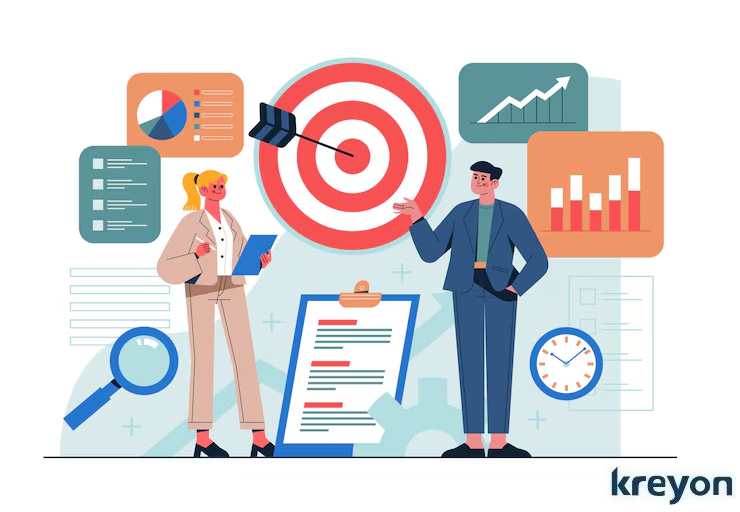The Impact of AI and Automation on Employees & the Workplace: Navigating the New Era

The proliferation and advancement of AI and automation technologies is reshaping the modern workplace in unprecedented ways. As industries across the globe increasingly adopt these technologies, their impact on employees and the work environment is becoming a focal point of discussion.
Many employees are frequently wondering whether their jobs will be automated soon. While AI and automation present opportunities for increased efficiency and innovation, they also bring challenges that need careful consideration.
Here we explore the multifaceted effects of AI and automation on employees and the workplace, examining both the potential benefits and the challenges that arise.
1. The Rise of AI and Automation
Revolutionizing Routine Tasks
AI and automation are reshaping the way routine tasks are performed. Automation technologies, such as robotic process automation (RPA) and machine learning algorithms, handle repetitive and predictable tasks with remarkable efficiency.
In manufacturing, robots perform precision assembly tasks, while in finance, software automates data entry and transaction processing. These advancements lead to increased productivity and reduced error rates, freeing employees to focus on more strategic activities.
Driving Innovation
AI and automation are not just about replacing existing processes; they are catalysts for innovation. AI-powered tools enable businesses to analyze vast amounts of data, uncovering insights that drive product development and strategic decisions.
For example, AI-driven customer analytics allow companies to personalize marketing campaigns, enhancing customer engagement. Similarly, automation facilitates the creation of new business models, such as subscription-based services and on-demand delivery.
2. Changing Roles and Skillsets
![]()
Evolving Job Descriptions
As AI and automation take over routine tasks, the nature of many jobs is evolving. Employees are increasingly required to engage in tasks that require human judgment, creativity, and complex problem-solving.
For instance, while AI can handle data analysis, human oversight is needed to interpret results and make strategic decisions. This shift necessitates a transformation in job roles, emphasizing skills that complement automation rather than compete with it.
The Skills Gap
The rise of AI and automation has intensified the demand for new skills, creating a skills gap in the workforce. Roles such as data scientists, AI specialists, and automation engineers are in high demand, while there is a growing need for skills in areas like critical thinking, creativity, and emotional intelligence.
To bridge this gap, employees must engage in continuous learning and professional development. Organizations play a crucial role in providing training and reskilling opportunities to help their workforce adapt to technological changes.
3. Impact on Workplace Dynamics
Collaboration Between Humans and Machines
AI and automation are fostering new forms of collaboration between humans and machines. In many workplaces, employees work alongside AI-powered tools that assist in decision-making and problem-solving.
For example, AI-driven virtual assistants can manage schedules and handle customer inquiries, allowing human employees to focus on higher-value tasks. This collaboration enhances productivity and innovation, as employees leverage technology to augment their capabilities.
Changes in Organizational Structure
The integration of AI and automation is influencing organizational structures. Traditional hierarchical models are giving way to more agile and collaborative structures.
Teams are becoming more cross-functional, with roles that blend human expertise and technological capabilities.
For instance, project teams may include data scientists working alongside domain experts to develop AI-driven solutions. This shift requires a rethinking of leadership and team dynamics, emphasizing flexibility and adaptability.
4. Addressing Job Displacement
The Risk of Job Loss
One of the most significant concerns associated with AI and automation is job displacement. Automation has the potential to eliminate roles, particularly in sectors with high levels of routine and repetitive tasks.
Jobs in manufacturing, retail, and administrative sectors are at risk as automation technologies become more advanced. This displacement can lead to economic uncertainty and social challenges, particularly for workers who lack the skills to transition to new roles.
Strategies for Reskilling and Transition
To mitigate the impact of job displacement, reskilling and upskilling are essential. Employees must acquire new skills to remain competitive in a changing job market. Organizations should invest in training programs that focus on skills aligned with the evolving demands of the workforce.
Additionally, partnerships between businesses, educational institutions, and governments can facilitate workforce development and support transitions to new roles. By fostering a culture of continuous learning, employees can adapt to technological changes and thrive in the evolving workplace.
5. Economic Impact

The impact of AI and automation has myriad benefits for organizations, society, and the economy. AI and automation can improve productivity, cost management, and overall growth.
Productivity Gains
According to McKinsey, AI and automation could contribute up to $13 trillion to global GDP by 2030, boosting economic growth by up to 1.2% annually.
Automation of repetitive and mundane tasks can significantly enhance productivity. For instance, automation can handle routine data entry, accounting stuff and processing tasks, allowing human workers to focus on more strategic activities.
Cost Reduction
Businesses implementing automation can see up to a 30% reduction in operational costs, according to a report by Deloitte. This includes savings from reduced labor costs and decreased error rates.
AI and automation can reduce the need for manual labor in various sectors, from manufacturing to customer service. For example, AI-powered chatbots can handle customer queries, reducing the need for a large customer service team.
AI-driven systems, like chatbots and automated production lines, enable businesses to operate around the clock without downtime, increasing overall output.
Revenue Growth
AI tools such as recommendation engines can personalize customer interactions and improve sales. For instance, companies like Amazon report that their recommendation systems, powered by AI, contribute to 35% of their revenue.
Many ecommerce companies are implementing AI algorithms to woo customers and providing them lucrative offers based on data insights from machine learning.
Automation and AI can enable businesses to explore new revenue streams. For instance, AI-driven data analytics can uncover market trends and opportunities, leading to the development of new products or services.
7. Ethical and Social Considerations
Ethical Implications of AI
The deployment of AI raises ethical considerations, particularly concerning decision-making processes and bias. AI systems make decisions based on data and algorithms, which can inadvertently perpetuate existing biases if not properly managed.
It is crucial to ensure that AI systems are designed with ethical considerations in mind, including transparency, fairness, and accountability. Organizations must implement practices to monitor and address biases in AI systems, ensuring that technology serves all stakeholders equitably.
Social Impact and Policy Considerations
The broader social impact of AI and automation includes changes in income distribution and societal structures. Automation may exacerbate income inequality if the benefits of technology are not equitably distributed.
Policymakers need to address these issues through social safety nets, income support, and policies that promote inclusive growth.
Moreover, public discourse and engagement are vital in shaping policies that balance the benefits of technological advancements with social equity.
8. Preparing for the Future

As AI and automation continue to evolve, lifelong learning will become increasingly important. Employees must proactively seek opportunities for professional development and skill enhancement.
Organizations can support this by creating learning programs and fostering a culture of innovation and adaptability. By embracing continuous learning, employees can stay ahead of technological trends and remain relevant in the workforce.
Fostering a Positive Work Culture
Creating a positive work culture is essential in navigating the impact of AI and automation. Organizations should focus on building an inclusive and collaborative environment where employees feel valued and empowered.
Encouraging open communication about the role of technology in the workplace can help address concerns and resistance. By promoting a culture that values both human contributions and technological advancements, organizations can foster a productive and innovative work environment.
Attracting Talent
Companies that embrace AI and automation can attract top talent interested in working with cutting-edge technologies and innovative solutions. AI and automation solutions can help companies attract the right talent based on data insights generated from social media and web data also.
9. Strategic Implementation of AI and Automation
The successful implementation of AI and automation requires a strategic approach. Organizations should:
Identify Business Needs: Clearly outline what problems you aim to solve or what processes you want to improve, for e.g. customer service improvement, optimizing supply chain etc.
Set Measurable Goals: Establish specific, measurable objectives for your AI and automation initiatives, such as reducing operational costs by 20% or improving response times by 50%.
Evaluate Impact: Assess how AI and automation will affect job roles, workflows, and organizational structures. AI and automation can free up employees for more creative work.
System & Data Integration: Ensure that AI and automation tools are compatible with existing systems, data and software.
Engage Stakeholders: Involve employees and other stakeholders in the decision-making process to ensure their perspectives are considered.
Monitor and Adjust: Continuously monitor the impact of AI and automation and make adjustments as needed to address any challenges.
Conclusion
The impact of AI and automation on employees and the workplace is profound and multifaceted. While these technologies offer significant benefits in terms of efficiency, productivity, and innovation, they also present challenges related to job displacement, ethical considerations, and workplace dynamics.
By embracing lifelong learning, fostering a positive work culture, and strategically implementing AI and automation, organizations can navigate this new era and create a work environment that leverages the strengths of both humans and machines.
As we move forward, it is essential to address the challenges and opportunities presented by AI and automation to ensure a future where technology enhances the human experience in the workplace.
Kreyon Systems offers cutting-edge AI and automation solutions to boost efficiency, reduce costs, & make AI-driven transformation for your business. If you have any queries, please contact us.
